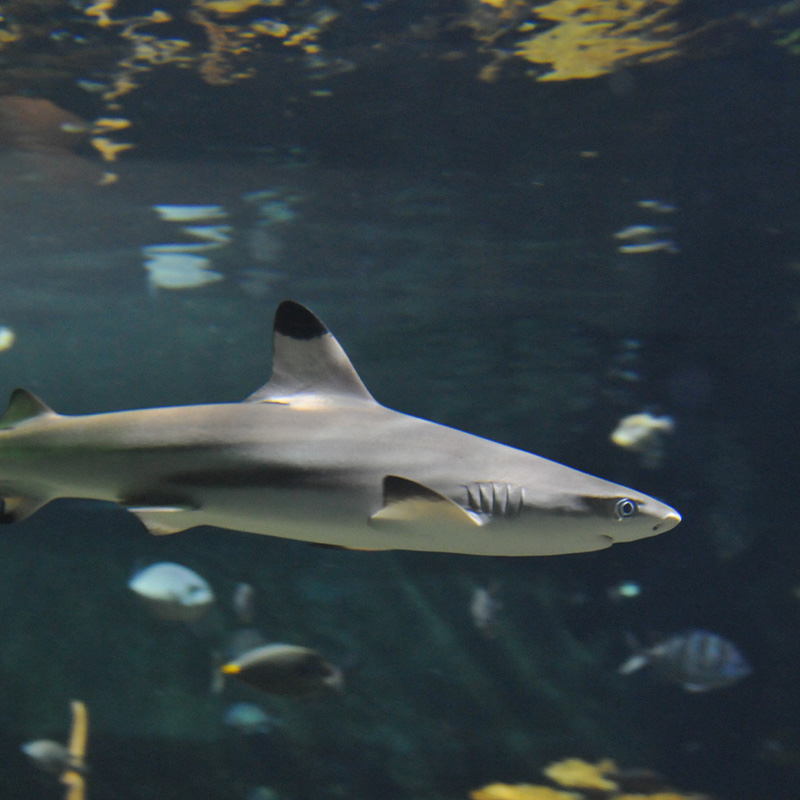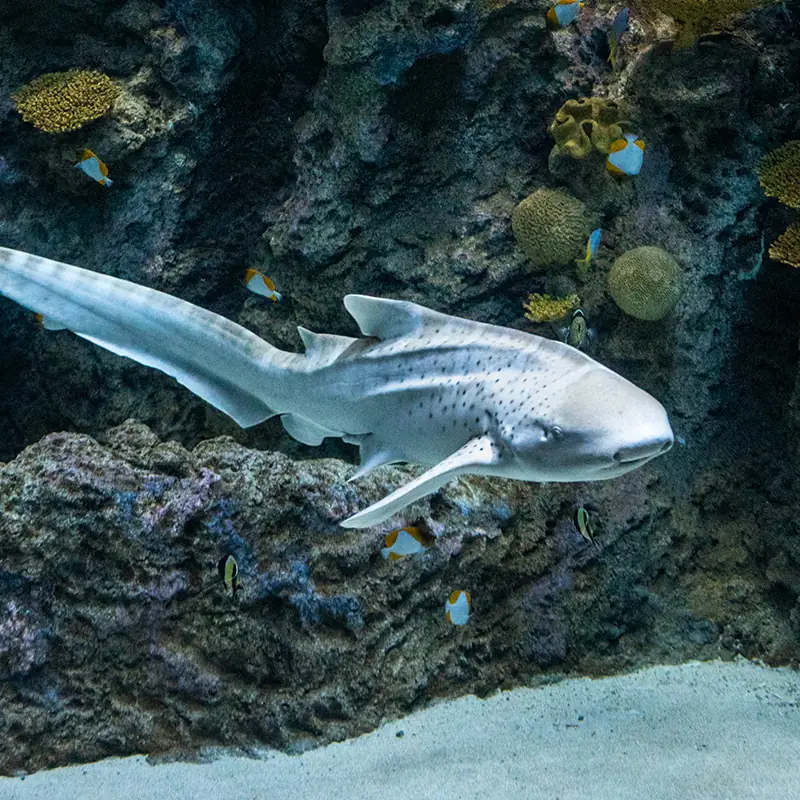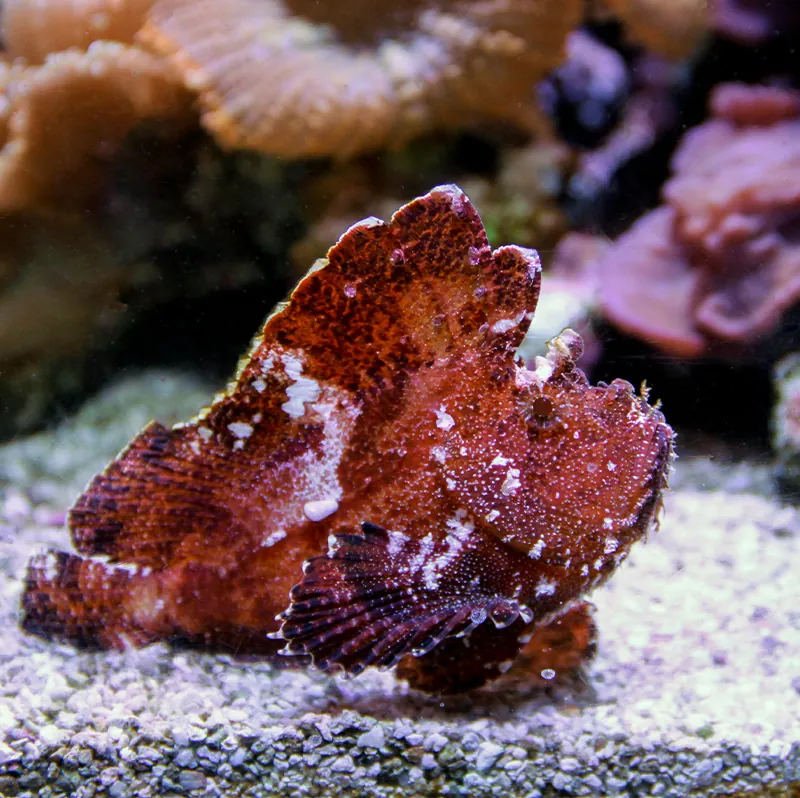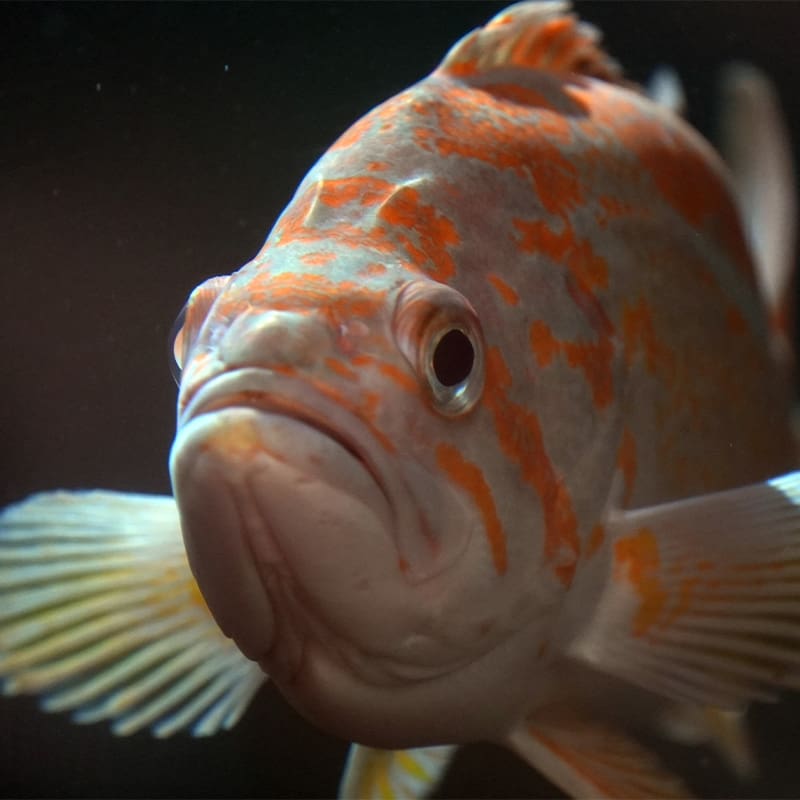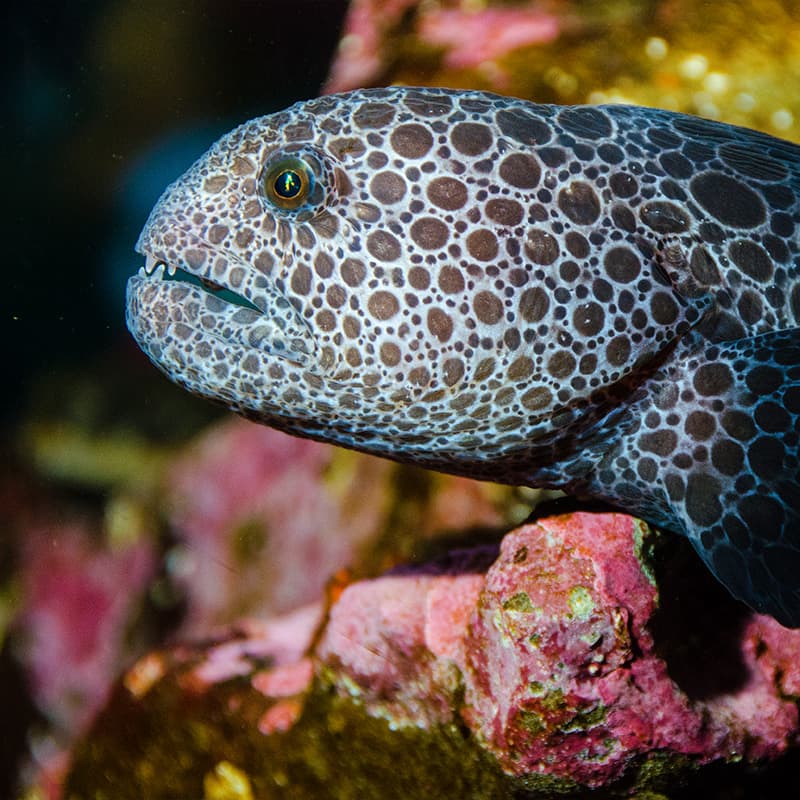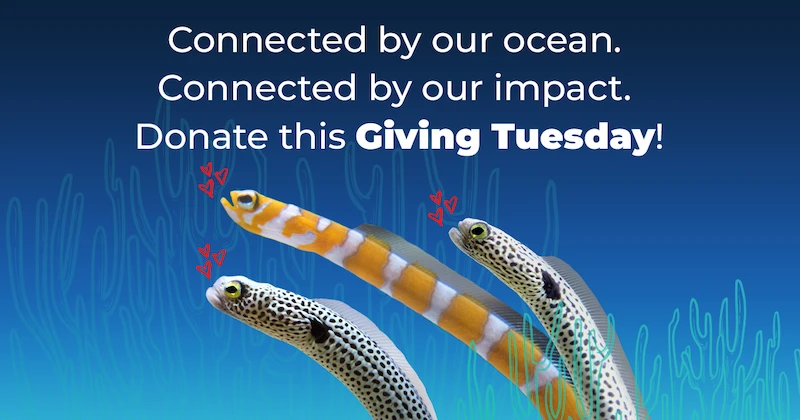- Fish
Leopard whiptail ray
An animal that's spot on!
Also known as honeycomb stingrays and reticulate whiptail rays, these shark relatives are distinguished by the leopard-like dark brown spots and yellowish background on the tops of their bodies. This unique patterning doesn’t occur until adulthood; newborns are light brown with dark spots. What happens in the life of a leopard whiptail ray? Keep reading to find out!
At the Aquarium
- The Reef, Ocean Pavilion

A true tall "tail"
Leopard whiptail rays, Himantura leoparda, are known for their very long, thin tails—which can be two to four times longer than their entire body!—that taper to a point and have a single, stinging spine near the middle. They use their tail for help with balance and steering, and wield the spine as needed to defend themselves against potential predators. Including the tail, leopard whiptail rays can grow to be up to 13 feet long and over 4 feet wide.
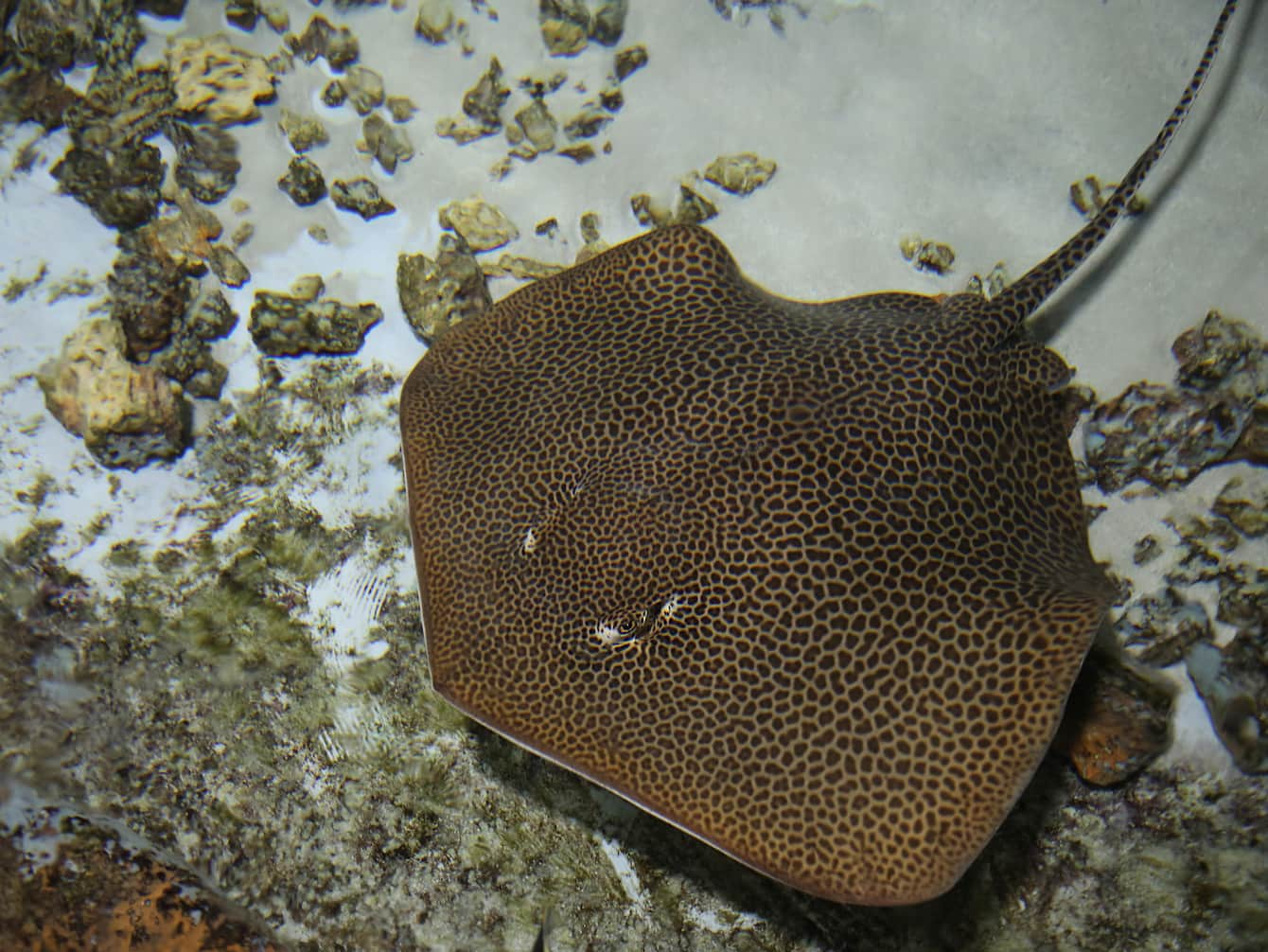
Home, home on the…sand
Leopard whiptail rays have been “spotted” in a range of waters, from the Indian Ocean to the Mediterranean Sea, as well as in the tropical Pacific Ocean. Sometimes they’re even found in freshwater habitats! They typically spend their time close to shore, in waters that are on the shallow side, over soft, sandy bottoms. That smooth surface comes in handy for reasons that we’ll explain in the next section.
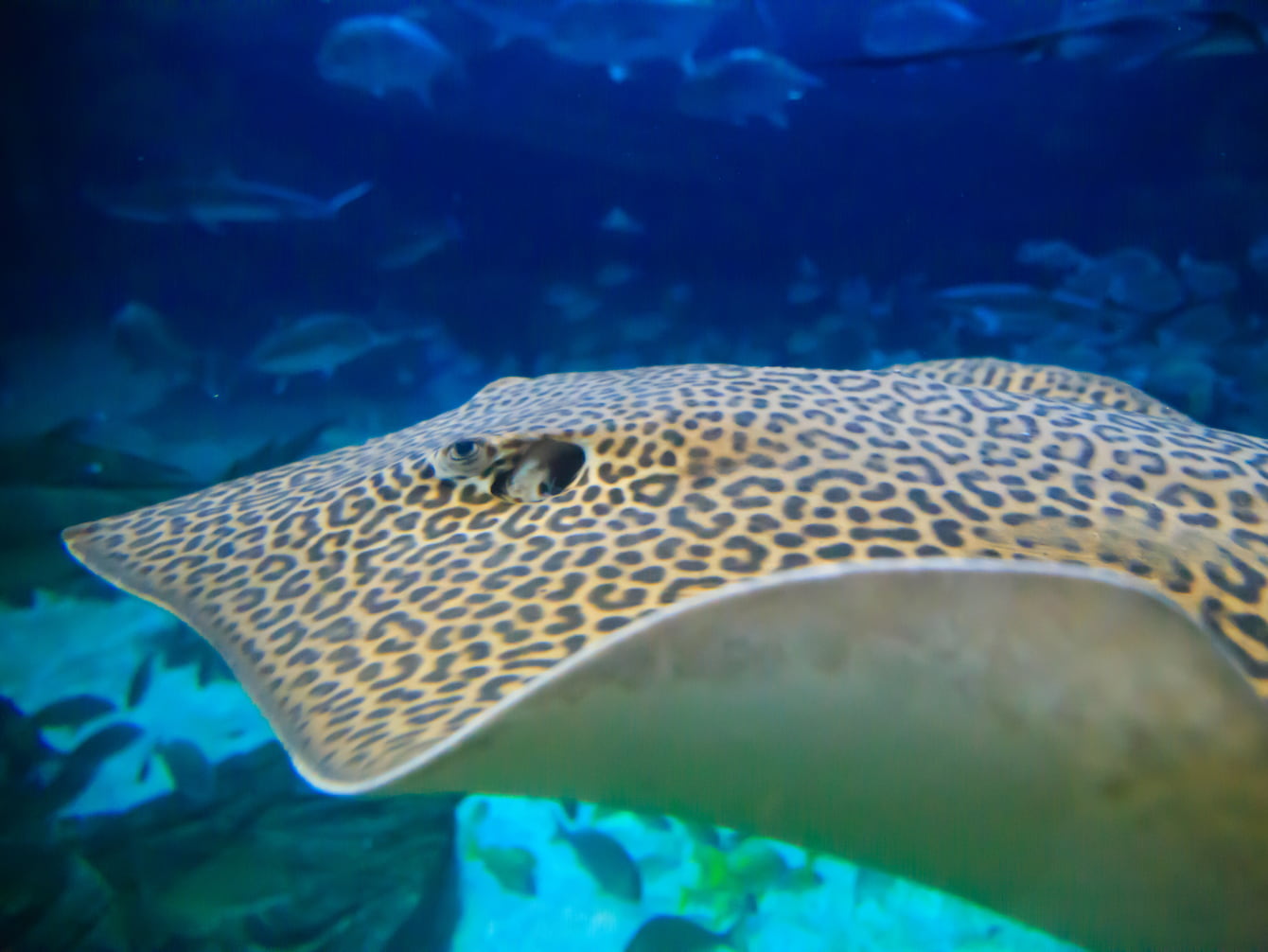
Seafood: it's what's for dinner
Primarily bottom feeders, leopard whiptail rays eat a variety of crustaceans (such as crabs and shrimp) as well as small fish, bivalves (like clams), worms and sea jellies. They use their pectoral (or side) fins to uncover hidden prey in the sand. Then they pin their meal below their body (or disc) and use their fins to maneuver it into their waiting mouths, which are handily located on the underside of their body. Their strong jaws and small, blunt teeth—up to 59 rows of them in their upper jaw!— crush any shells that might be in the way of the delicious morsel inside.
Independent from the get-go
After a gestation period of approximately one year, females give birth to litters of up to five pups in the summer. Newborns emerge tail-first, with their pectoral fins wrapped around their bodies. Their spine, a potent weapon later in life, is soft and covered in a sheath—so babies can’t harm their moms as they enter the world. The sheath soon falls off and the spine hardens. Pups, only about 8 inches long (not including the tail) when they’re born, look like miniature adults—although the patterns of their spots are slightly different—and act like them: They’re independent at birth.
Rays of hope for an at-risk population
Human actions are negatively affecting leopard whiptail rays, which are listed as Vulnerable by the International Union for Conservation of Nature. The rays are heavily fished in many areas, primarily for their meat—as well as their skin and cartilage. The good news is that each of us can make a difference for ocean health—and, by extension, for leopard whiptail rays. Small changes, like using less gas and choosing sustainable seafood, can make a big difference. Raising your voice for collective action on behalf of the marine environment can too! Ready to get started? Visit our Act for the ocean webpage to learn more.
Quick facts
A leopard whiptail ray’s tail can be up to four times longer than its body!
These shark relatives have up to 59 rows of teeth in their upper jaw.
Females give live birth, and pups are independent after they’re born.
